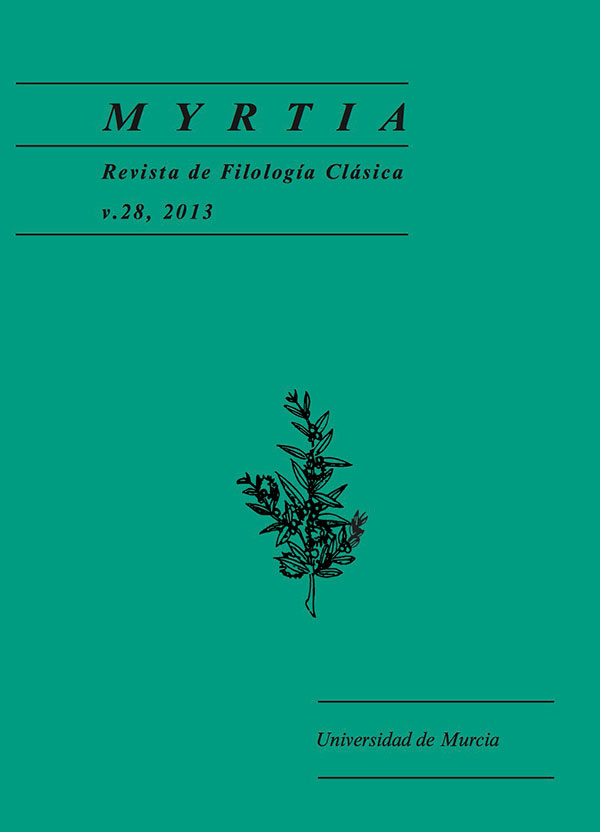The epipólesis in literary Renaissance epic: Tasso, Mesa’s model; Tasso, successor of Greco-Roman epic and historiography
Abstract
In this paper we start with a comparative analysis of the descriptions of the preliminaries to the Battle of Las Navas de Tolosa reported in Cristóbal de Mesa’s homonymous poem and to the Battle of Jerusalem in Torcuato Tasso’s heroic Jerusalem Delivered. The cores of these preliminaries are the pre-battle speeches pronounced by the generals of both sides. This analysis shows how the Extremadurian poet faithfully follows the model of Tasso’s episode. Secondly, we inquire into the original proceeding used by the Italian poet: he does not imitate any particular episode, but displays a profound rhetoric knowledge of the structural and functional features of the epipólesis (a type- scene shared by the classical epic and historiography in which the general harangues his men while going along the ranks), he leaves his own mark on the scene and creates as such a new valid model in the literary tradition.Downloads
-
Abstract258
-
PDF (Español (España))133
Las obras que se publican en esta revista están sujetas a los siguientes términos:
1. El Servicio de Publicaciones de la Universidad de Murcia (la editorial) conserva los derechos patrimoniales (copyright) de las obras publicadas, y favorece y permite la reutilización de las mismas bajo la licencia de uso indicada en el punto 2.
2. Las obras se publican en la edición electrónica de la revista bajo una licencia Creative Commons Reconocimiento-NoComercial-SinObraDerivada 3.0 España (texto legal). Se pueden copiar, usar, difundir, transmitir y exponer públicamente, siempre que: i) se cite la autoría y la fuente original de su publicación (revista, editorial y URL de la obra); ii) no se usen para fines comerciales; iii) se mencione la existencia y especificaciones de esta licencia de uso.
3. Condiciones de auto-archivo. Se permite y se anima a los autores a difundir electrónicamente las versiones pre-print (versión antes de ser evaluada) y/o post-print (versión evaluada y aceptada para su publicación) de sus obras antes de su publicación, ya que favorece su circulación y difusión más temprana y con ello un posible aumento en su citación y alcance entre la comunidad académica. Color RoMEO: verde.





